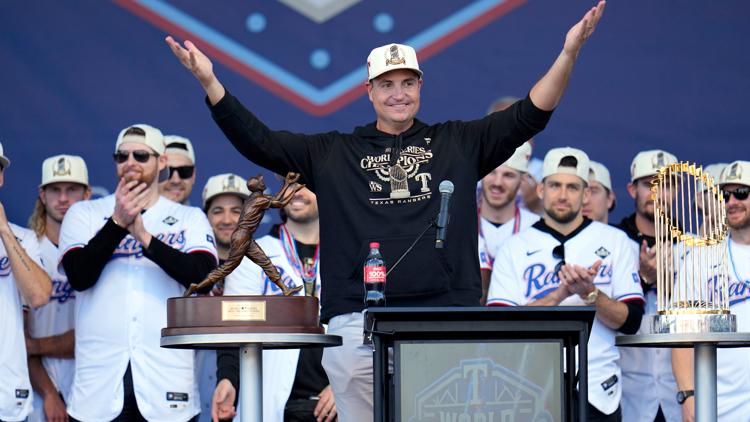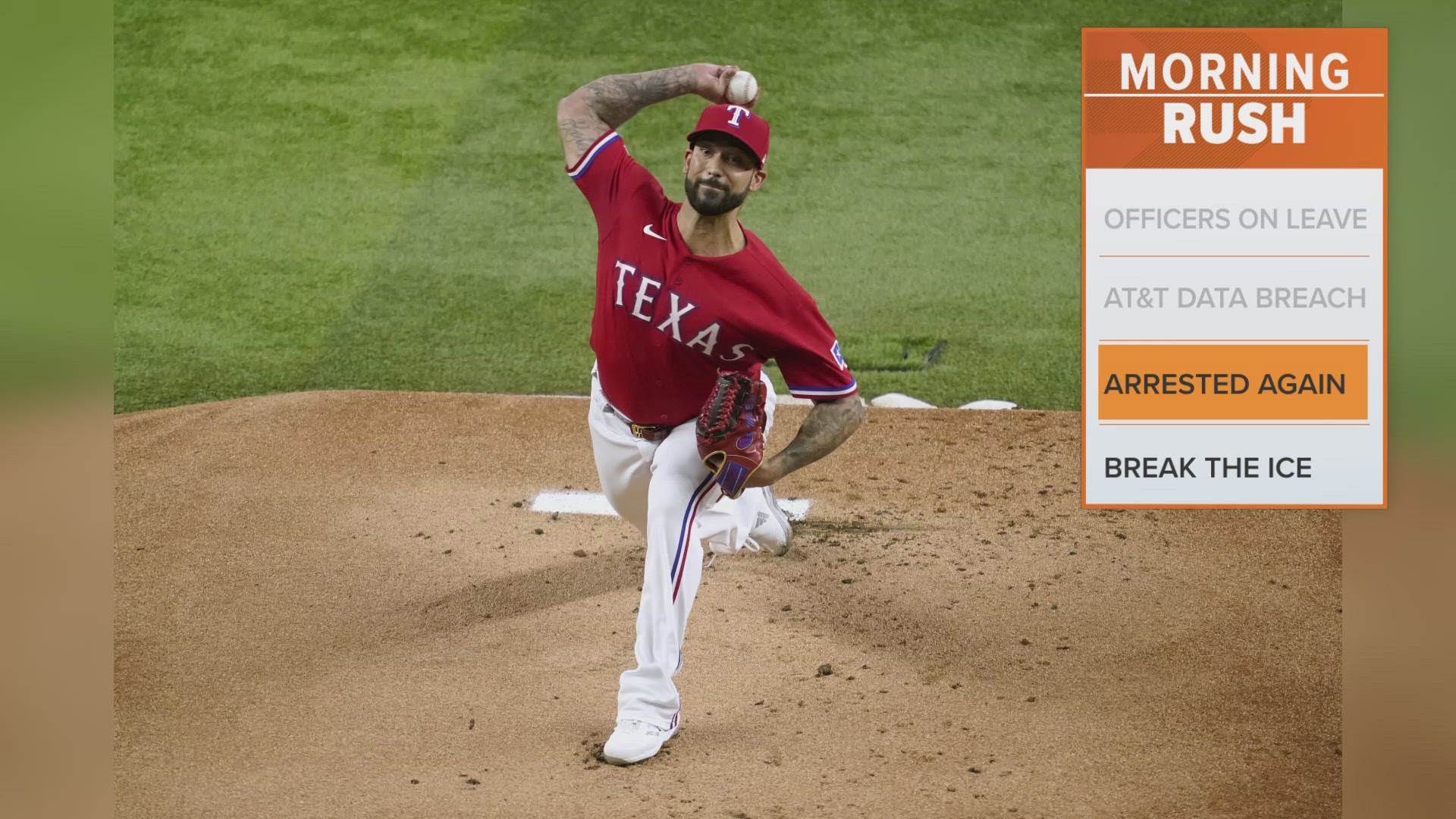ARLINGTON, Texas — Undoubtedly, the Texas Rangers front office is keeping tabs on the MLB playoffs after the team failed to reach October following their magical run in 2023. For the front office, there is rarely an offseason, and general manager Chris Young has no doubt already laid out a list of objectives for the franchise as winter draws nearer.
While there may be eyes on the contracts and plans and targets being put to paper, there is a certain cadence that teams will have to follow once the successor to the Rangers’ championship is determined later this month. For Texas, that means they get an extra month to prepare in an attempt to return to the playoffs.
Moments after the World Series
Teams can start putting together their recipe for the 2025 campaign virtually as soon as the Commissioner’s Trophy is handed over. The Hot Stove starts with trade talks and speaking to internal free agents. Big decisions for Young and company include whether or not to bring back pitchers Jose Leclerc, Kirby Yates, Jose Ureña, Andrew Heaney, and Max Scherzer, along with outfielder Travis Jankowski.
With Young already citing the bullpen as a primary area of need during the winter, several of those names could be a priority for the team. As with the 2023-to-2024 teams, there is little expected turnover among the position players with the lineup all but set, barring a shakeup via trades or identified upgrades via free agency.
Texas has a solid young core of position players, so figuring out the pitching staff is going to be the focus of the offseason more than likely.
Five days after the World Series
Players and clubs with contract options must make decisions regarding their futures together. The two biggest options up for consideration are Nathan Eovaldi’s $20 million player option and David Robertson’s mutual option. For Eovaldi, it’s solely in his hands whether he wants to come back to the Rangers at a rate of $20 million for the 2025 season or try his luck getting either a higher dollar amount or longer-term deal from a club.
For Robertson, if both sides agree on it, he could come back to the team on a $7 million deal. Robertson, though, coming off a resurgent year, would likely fare better on the open market and could decline his part of the option.
This is also the time span in which clubs must decide whether to offer eligible free agents a qualifying offer. This year, the tag for a one-year offer was $21.05 million. The QO can only be made to a player who is going to be a free agent this winter, has never received the offer before and who was not traded during the season.
Eovaldi, if he declines his option, is ineligible to receive the qualifying offer, but Heaney is a strong “maybe” on both receiving and accepting the offer. Players who are offered the pact have one week from the end of this 5-day period to accept or reject the offer.
In recent history, the Rangers extended the offer to Martin Perez coming off an All-Star season ahead of the 2023 season and he accepted the contract to remain with Texas and earned a championship ring. If a player is extended a qualifying offer but declines and then signs a free-agent contract with a different club, the team receives draft pick compensation.
Once decisions on options and qualifying offers are solidified, true free agency begins and teams are free to talk to all players without contracts.
December 9-12, 2024
One of the highlights of the Hot Stove is the Winter Meetings. Held in December, the meetings not only offer impressive networking opportunities, but the GMs and front offices from each club meet to discuss the future of baseball and, yes, make deals.
This year, the meetings will be held in Dallas, giving the Rangers home-field advantage to make moves during this year’s transaction bazaar. While it’s not a guarantee that free agent deals and trades will happen en masse during these meetings, the fact that all of the decision-makers and agents are in one centralized location makes it much more convenient for wheeling and dealing.
The last time the offseason meetings were held in Dallas was December 2011, right after Texas had lost their second consecutive World Series. At those meetings, the Los Angeles Angels signed C.J. Wilson and Albert Pujols to major contracts and the revamped Miami Marlins “won” the Winter Meetings by signing Jose Reyes, Mark Buehrle and Heath Bell. Which just goes to show that making moves at the meetings isn’t always a ticket straight to October.
The other significant event at these meetings, the Rule 5 Draft, happens at the end of the week and can end up having a significant impact on a roster. Players who are not on the 40-man roster and who have been playing in the minor leagues for four years (if signed after age 19) or five years (if signed before age 19) are eligible to be picked in the Rule 5 draft.
Rule 5 picks must remain on the Major League roster for the entirety of the season immediately following the draft (not counting time on the injured list) or be offered back to their original team. Former Rangers such as Josh Hamilton, Alexi Ogando, Darren O’Day, and Joakim Soria were Rule 5 picks who became All-Star players.
Mid-January to Early February
Players who are not going to be free agents and are still within their first six years of big league service are eligible for arbitration. Arbitration-eligible players can negotiate their salary for the upcoming season. Teams can obviously counter, but if neither side can reach an agreement, an independent, third-party arbitrator hears both sides and decides which submitted salary will be paid for the upcoming season. Famously, the Rangers haven’t had a player go to an arbitration hearing since Lee Stevens in 2000.
This year, the Rangers have arbitration decisions to make on the following players: Dane Dunning, Josh Sborz, Jonah Heim, Nathaniel Lowe, Adolis Garcia and Leody Taveras. Should the team be unwilling to pay the expected increase in salary for an arbitration-eligible player, they can be released or traded.
Fresh off a World Series victory, 2024 ultimately didn’t go the way that the Rangers or Bruce Bochy thought it would go. Nevertheless, it’s clear that there’s still a lot to build off of and the front office has the coming months to try to put the pieces in place for a rebound effort in 2025.
Do you think the Rangers will rebuild a winner for 2025? Share your thoughts with Matt on Twitter @FisherWritesMLB.



